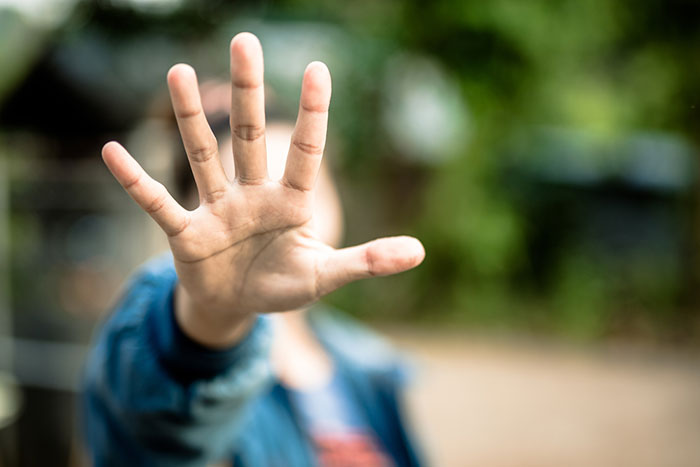PBIS and bullying are two words you should be hearing together more. One’s a problem; the other’s a solution. PBIS can be a game-changer for the classroom, and teachers and administrators can even prevent bullying with PBIS to improve culture at the school level, too.
Using Positive Behavioral Supports and Interventions (PBIS) helps you to promote prosocial behaviors and create an environment where it’s harder for bullying to thrive. Below are useful steps that you can follow to determine the severity of bullying among your students, implement PBIS strategies for assessment and implementation at the school level, and build a more positive school culture long-term.
1. Assess what you know about the bullying problem
When bullying is identified as a schoolwide problem, the best first step is to have a PBIS school leadership team examine what they already know.
For example, what specific behaviors are occurring? It’s important to be aware of the different types of bullying, such as verbal or physical aggression and cyberbullying. When and where did those behaviors happen? Which and how many students and staff members were involved?
Then, the leadership team can determine the Tier I practices already in place and improve upon them. It’s good to establish plans for how students can avoid situations where bullying is likely to happen, or what to do when prevention efforts don’t work. Ineffective strategies shouldn’t be continued.
2. Implement new strategies for Tier I, II, and III
Your school can prevent bullying with PBIS at the Tier I, Tier II, and Tier III levels.
At Tier I, students and staff should be taught formally and directly about respectful, appropriate behavior and positive social skills.
At Tier II, students who do not respond to Tier I supports should be given more targeted social skills instruction, increased monitoring and positive attention from adults, and specific and regular daily feedback on their progress (as well as further academic support, if needed).
And finally, at Tier III, students still demonstrating problem behaviors should receive more focused attention, such as individual academic and behavior intervention planning and mental health support from their school, family, and community.

3. Elementary schools: Teach social responsibility with a 3-step strategy
PBIS’ Bully Prevention guide for elementary schools provides a wealth of ideas and printable lessons that schools can use to prevent bullying with younger students.
One recommended strategy that teaches social responsibility skills is the three-step “Stop, Walk, and Talk” response. Different classrooms or grades should have their own signal. For example, instead of “stop,” students could say “quit it” or “enough” accompanied by a hand symbol.
These should be discussed and practiced with students so they’re clear on the steps to follow if they encounter bullying behavior. It’s also important to define examples of when to use the stop signal (when bullying is occurring), as well as when not to use it. This helps students understand what is acceptable behavior and what’s not and identify occurrences on sight.
It’s also important to discuss what your school’s rules are for gossip (eg., “Being Respectful means saying only nice things about other students”), inappropriate remarks (eg., “Being Kind means encouraging others and making them feel good”), and cyberbullying (eg., “Being Kind and Respectful means saying only nice things […] in your use of digital media”).
4. Middle and high school: Create a culture where students ‘Expect Respect’
Bullying can be a common problem in middle school and high school. PBIS’ Bullying and Harassment Prevention guide for older students is an excellent resource for taking steps to foster respect, coach teachers and staff, and much more.
The stop signal discussed in the previous section should be adapted for more mature students as they may find it too “childish.” To achieve a school culture where students “Expect Respect,” they should achieve and use five core skills and understand how adults will respond in turn:
- Discriminate respectful from non-respectful behavior. As in the previous section, students should be taught what behavior is OK and what isn’t according to your school rules.
- Use a schoolwide “stop phrase” if someone is not respectful. PBIS teaches that students often fail to send clear social signals to one another when they’re involved in a socially averse interaction and that simple strategies can interrupt bullying behavior instead of escalating it.
- Use a “stop phrase” and remove the recipient from the situation. PBIS states that bystanders play a key role in supporting (or, ideally, defusing) socially aggressive behavior. Teaching a “bystander strategy” is important for when students observe a peer being bullied (physically or virtually, as with cyberbullying). For example, bystanders can also use the stop phrase, ask the recipient to leave the area with them, and comfort the recipient by saying something kind (eg., “I’m sorry that happened”).
- Use a “stop strategy” if asked to stop by someone else. The offending student should stop what they’re doing, even if they don’t feel they’re doing anything wrong. They should take a breath and move on with their day.
- Get help from an adult safely. This applies to both the recipient and bystanders. Adults should thank the student for informing them, listen empathetically to the problem to get the important details (if this is the first time, as well as who was involved, what, when, and where), ask if the offending student is likely to retaliate if confronted, and help decide a course of action, such as filing a report or developing a safety plan. It’s important to use supportive statements and follow appropriate next steps with students.

5. Invest in Social Emotional Learning (SEL)
To reduce the effectiveness of bullying behavior, schools should take steps to prevent violence by implementing curriculum that emphasizes Social Emotional Learning (SEL) and targeted social skills instruction.
Through PBIS and Classcraft, it’s possible to develop positive school and classroom social cultures. It’s essential to give regular, frequent, and positive acknowledgement of successful academic and social behavior; involve students and community members, as well as faculty; and ensure that adults model the same behavior and values that are expected of students. There are many other protective strategies you can use.
By using PBIS, you can reduce problem behaviors that already exist, prevent bullying before it starts, and dramatically improve the culture at your school.
Photo credits: SpeedKingz and 271 EAK MOTO / Shutterstock.com
MTSS - PBIS


